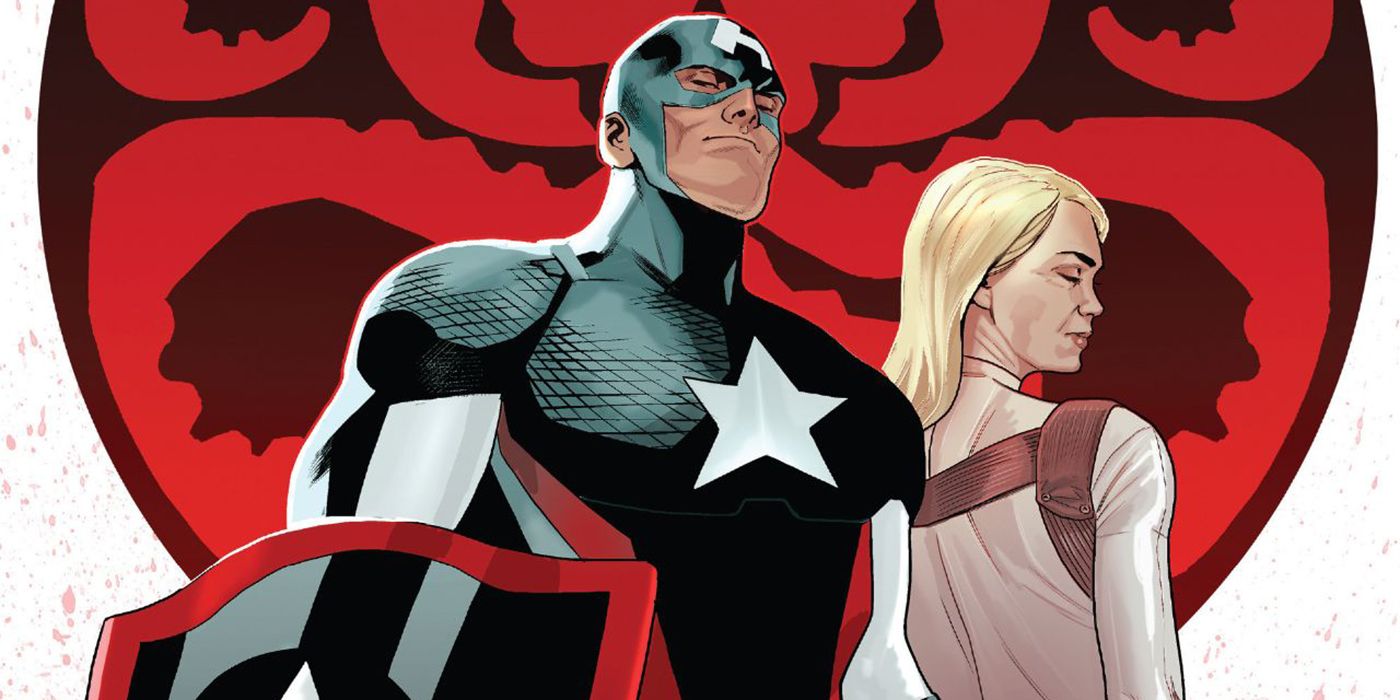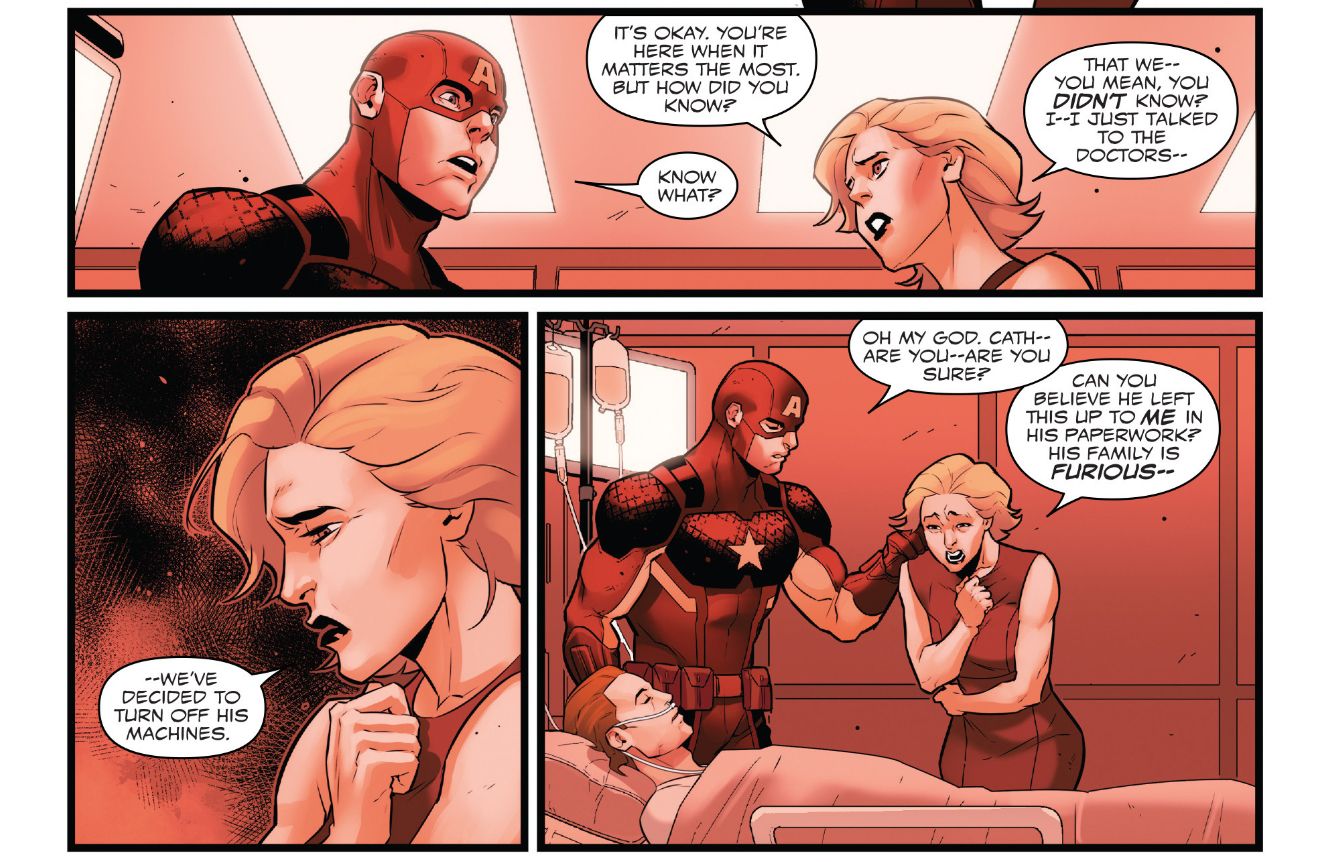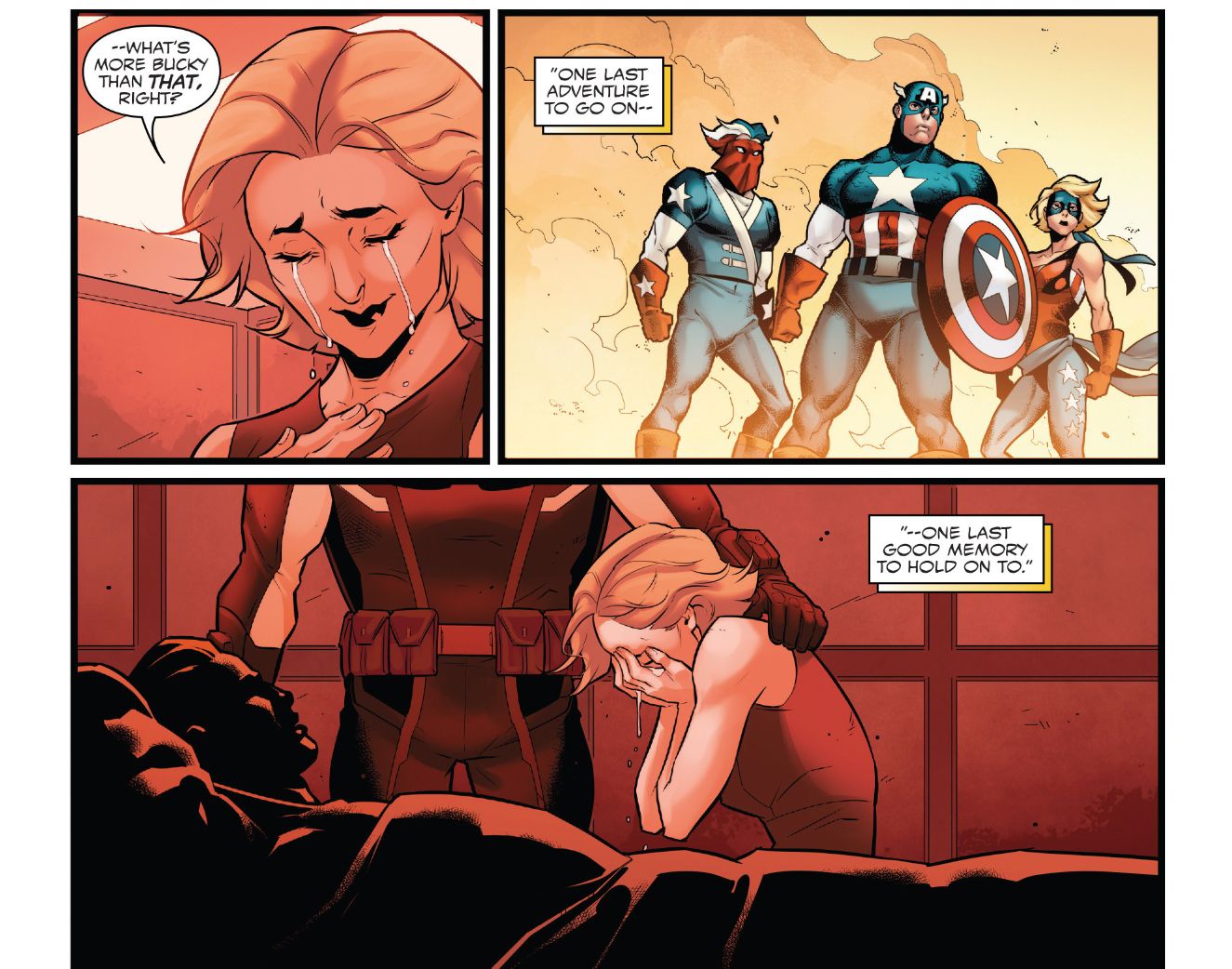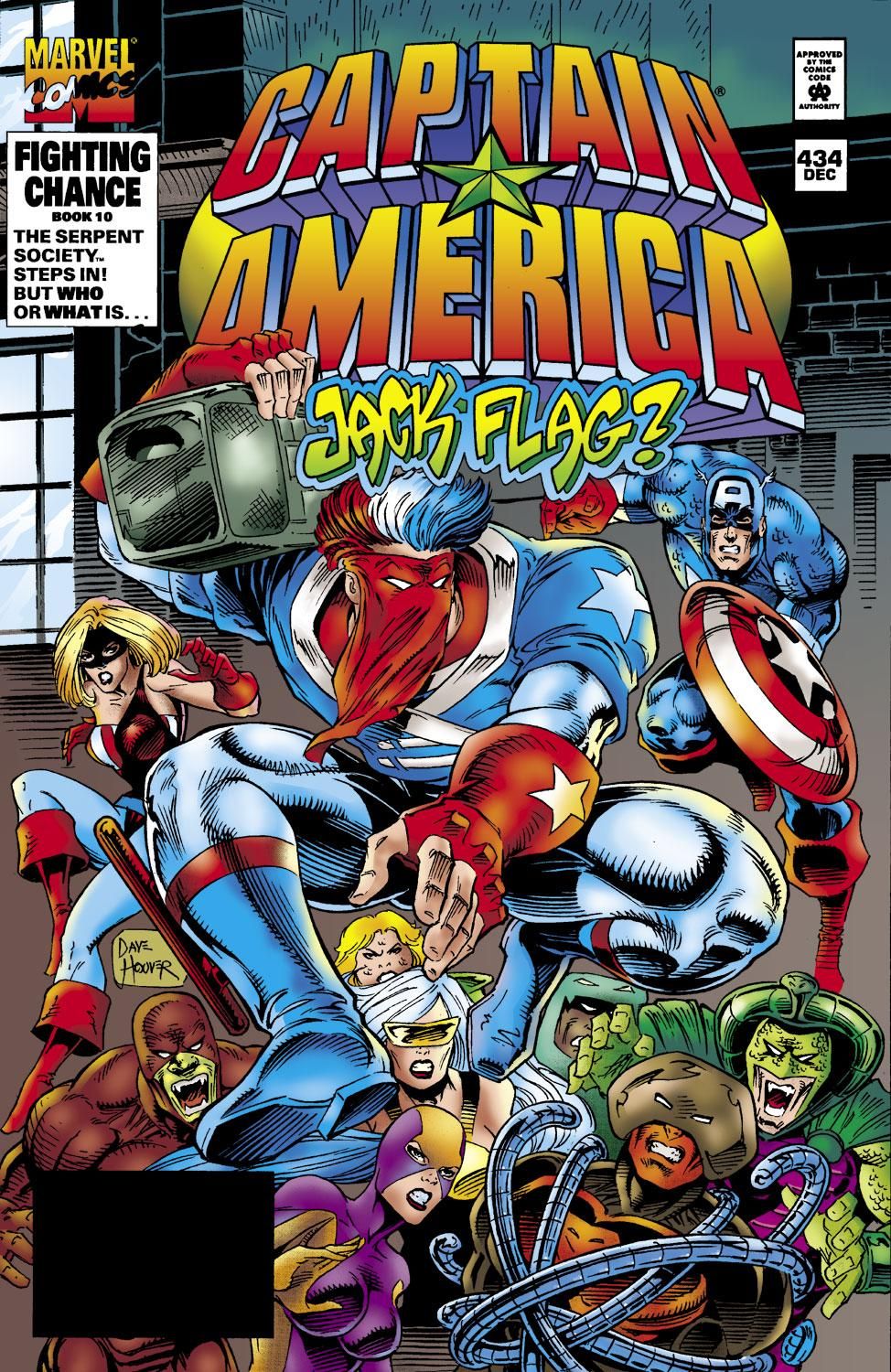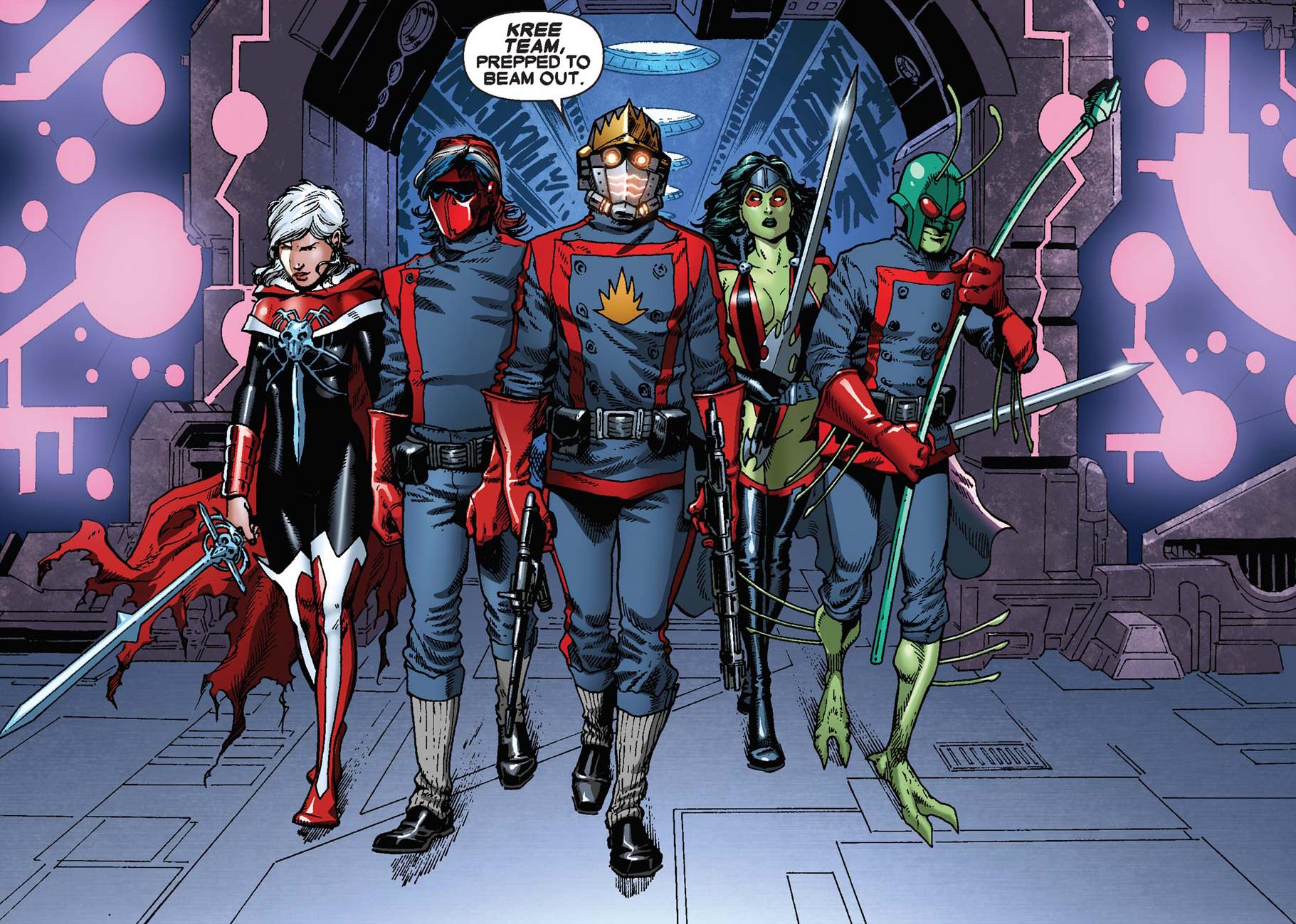SPOILER WARNING: This article contains spoilers for "Captain America: Steve Rogers" #10, in stores now.
Wishing to maintain control over his plan, Rogers sets off to prevent Jack Flag from ever waking up and revealing his secret. Cap arrives at Jack's room, alone, and gets ready to inject the substance into Jack's I.V. when he's interrupted by Free Spirit. Cap still gets what he's after though; Cathy tells Cap that they've decided to turn off Jack's life support.
The doctors at the hospital don't have the means to study Jack's physiology like Selvig; they've deduced that Jack's totally brain dead with no chance of coming back, contrary to Selvig's study. With that information, Cathy's decided to take Jack off life support. Before he goes, Cathy tells Cap about Jack's last wish, to be his new Bucky. Considering that both Bucky and Jack sacrificed themselves to stop Baron Zemo...
Of course Jack wasn't killed by Baron Zemo -- he was pushed out of the plane by Cap. And that secret dies with Jack.
While Jack Flag may be an obscure character, he's actually had a pretty impressive tenure as a superhero -- one that included a lengthy stint as one of the Guardians of the Galaxy. Jack Flag debuted back in 1994's "Captain America" #434 -- an issue with a cover that has to be seen to be believed.
Yeah, Jack originally carried a "Boom Box" that shot energy blasts out of it. In that issue, Jack debuts as a street-level vigilante with a plan to infiltrate the Serpent Society and take it down from within. Alerted to his plan Captain America and Free Spirit showed up and helped Jack wrestle the Serpents. He fought alongside Cap and Free Spirit for a brief time, until Cap struck out solo following the events of "Onslaught" and "Heroes Return." Jack popped up again almost ten years later in "Thunderbolts'" tie-in to the first "Civil War" event. In that story, the Thunderbolts were tasked with taking Jack Flag out for violating the Superhuman Registration Act. Bullseye stabbed Jack in the spine, leaving him paralyzed, and the hero was hauled off to Prison 42 in the Negative Zone.
Jack's relocation to the Negative Zone would lead to an unlikely cosmic phase of his superhero career. During "Secret Invasion," Jack took control of the prison -- a position he held when it was visited by Star-Lord. After a skirmish with the alien Blastaar and his gang, Jack and Star-Lord high-tailed it back to the Guardians' headquarters. There, Jack got a new lease on life after alien technology healed his spine and he accepted an offer to join the Guardians of the Galaxy in issue #13. Jack stayed with the team -- fighting alongside Drax, Rocket, Groot, Gamora, Mantis and the rest -- until the end of the run in 2010's "Guardians of the Galaxy" #25.
Why and when Jack left the Guardians remains unknown. When the Guardians returned to prominence in 2012, he was not a member of the team; the new, pared down roster resembled the unit that would go on to appear in the Marvel movies, and Jack was not among them. Jack returned last year in "Steve Rogers" #1 -- and we all know how that went for him.
It's also worth pointing out that Jack was taken off of life support off-panel. It's a rule in comics that nobody's dead unless you see the body (and really, nobody's ever dead even if you see the body). While Cap and Cathy react as if Jack's time is up, it's always possible that a plot twist could reverse his fate. But for now, at least, Jack Flag's status is indeed grim.
"Captain America: Steve Rogers" #11 arrives in stores on February 8.

